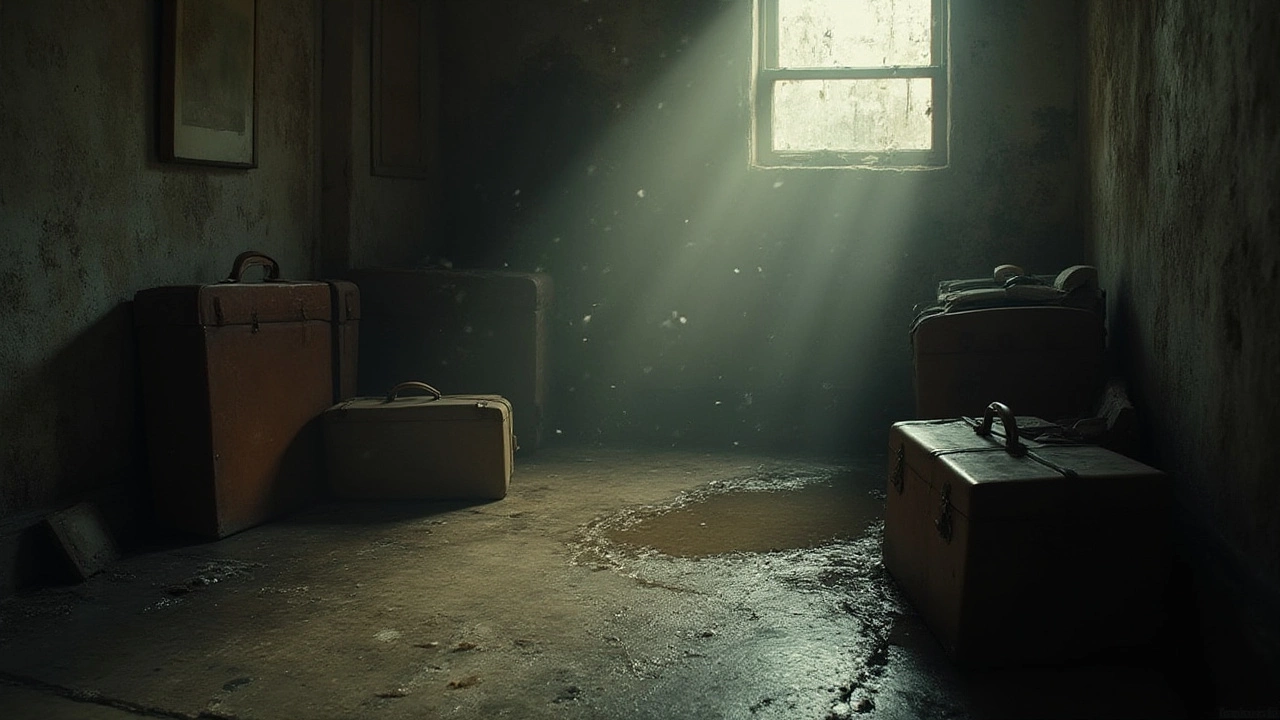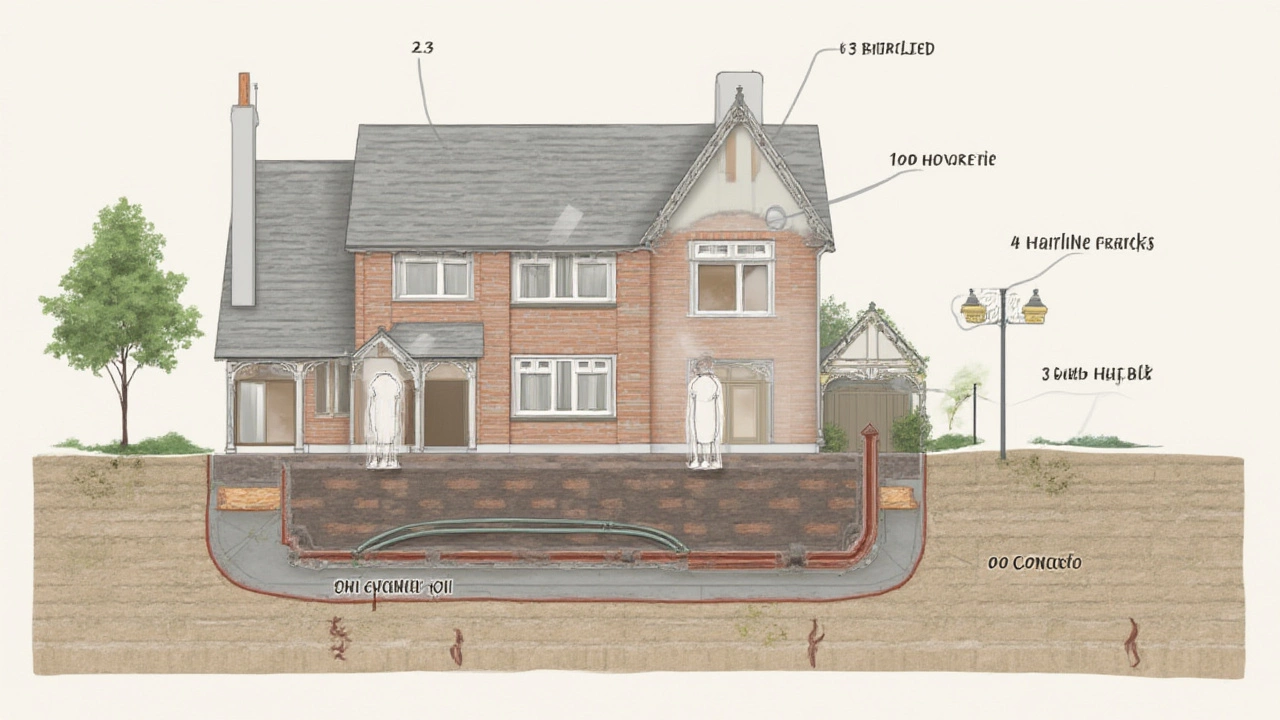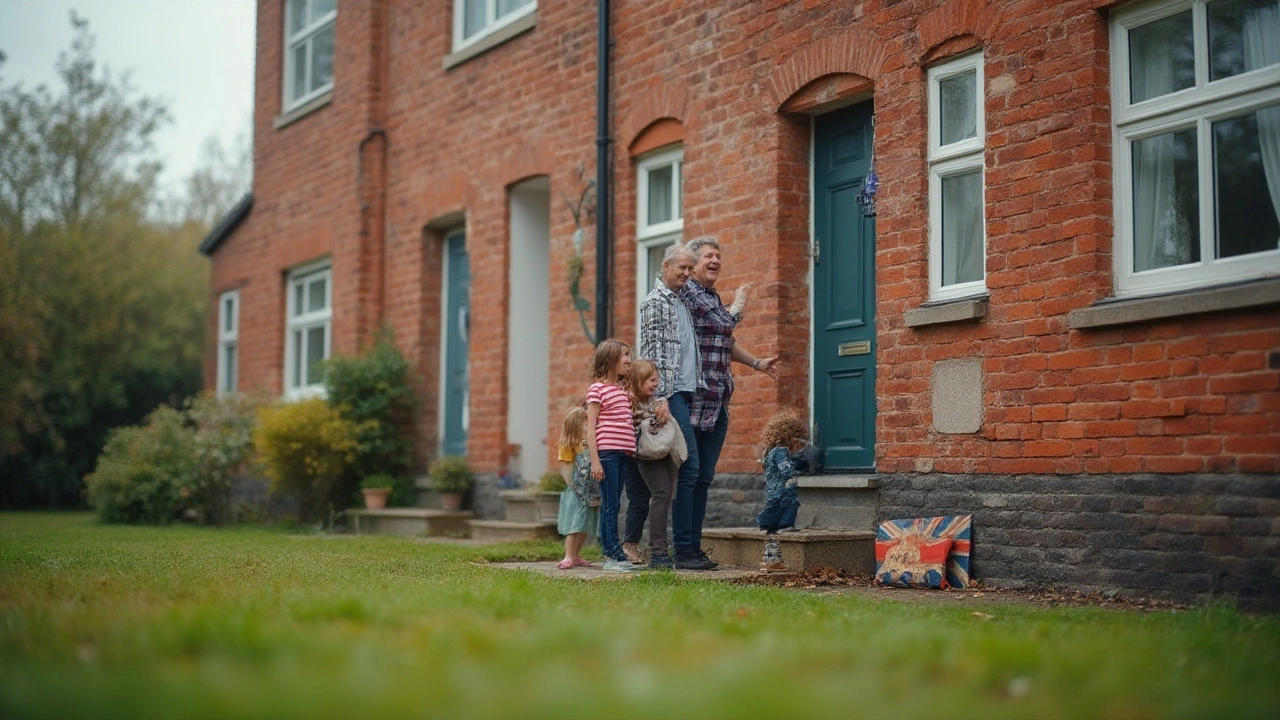Imagine opening your basement door and being hit by that unmistakable musty smell—like damp earth after a storm, but indoors. It’s not just gross; that odor could be your foundation’s early distress call. When water messes with the foundation, it rarely screams for attention right away. Instead, it starts with little whispers that most folks brush off: hairline cracks, a gentle slope in your floor you only notice when your tennis ball rolls the wrong way, or brickwork that suddenly looks more like a jigsaw puzzle than a tidy line. These aren’t just eyesores. They’re nature’s way of nudging you to take a closer look before you end up with half your living room sinking or your house plants in a basement swimming pool.
Common Visual Signs of Water Damage to Foundations
Most homeowners think foundation trouble kicks off with epic flooding, but water damage usually begins its mischief much more quietly. You might spot thin, spidery cracks along your basement walls, sometimes just a hair’s breadth wide. But if you see them spreading or widening, it’s not just old age—it’s possibly a sign that water has seeped into places it shouldn’t. Look for discoloration where the wall meets the floor. Water stains often show up as brownish or yellow splotches, and sometimes you’ll see efflorescence—a fancy word for the white, powdery substance that appears when water evaporates and leaves behind salt deposits. If your paint is bubbling, peeling or flaking off the wall, that’s another giveaway. The water’s not only behind the wall; it’s pushing its way through.
Sometimes the floor gets in on the act. Watch for sections of your laminate or wood flooring that want to bow upwards, or ceramic tiles that suddenly feel loose. Concrete floors may look darker in patches, especially after heavy rain. Rust on metal fixtures near the base of walls or on exposed steel in the basement is a red flag, too. On the outside, stepped cracks along brickwork or block walls—like little stair-steps—are classic signs things aren’t right beneath your feet.
The telltale musty odor isn’t just unpleasant; it means moisture is feeding mold behind the scenes, which can cause health problems and signal standing water you can’t see. If furniture or stored boxes in your basement seem damp, or you spot mold growing on lower walls, you’re dealing with more than a housekeeping issue. Even swollen or sticky doors, or windows that suddenly refuse to budge, could mean your house’s skeleton is shifting as the foundation moves with water’s steady push. If you have drywall, look for unexplained cracking or warping, and don’t forget to check your skirting boards for swelling or dark stains.
Structural Clues That Water Is Hurting Your Foundation
Water’s pressure on your foundation isn’t just cosmetic. Over time, it weakens the structure itself, causing bigger problems that cost a ton if ignored. Foundation settlement is at the root of many headaches. If you notice your floors suddenly feel uneven, or doors start sticking for no reason, grab a spirit level and check for slopes. Big warning: If you can roll a marble across the room and it always finds the same low spot, it’s time to worry. Cracks that appear above your windows or doors, especially in a step-like pattern, hint at foundation shifting caused by water undermining the soil below.
Ever see a gap appearing between where your wall meets the ceiling, or a visible separation between an interior wall and the floor? Those “step” cracks aren’t just ugly—they’re a sign your foundation is moving. Sometimes, you might find gaps opening up along your home’s exterior, especially near corners. Watch for places where exterior doors or windows look crooked in their frames or won’t latch, even after adjustment. If you have a crawl space, make sure to peek inside occasionally; if the supports or joists look damp, moldy, or sagging, there’s a good chance water’s found its way in.
More than a few British homes have their own unique version of this problem thanks to clay-heavy soils. In droughts, the soil shrinks, but when the rain returns, the expanding clay pushes against the foundation, setting up a cycle of cracks and movements. This expansion and contraction can lead to diagonal cracks—often wider at the top or bottom—across walls as the load-bearing parts of your house adjust to their new, uneven setting. Old brick houses, so common around London, get telltale bulging or bowing walls where water has weakened the mortar internally. Don’t dismiss rusted metal ties or anchors in exposed brickwork; they’re another clue moisture is corroding vital supports from the inside out.

Hidden Symptoms: Moisture, Mould, and Indoor Air Trouble
The sneaky thing about water damage is that it doesn’t always shout its symptoms from the rooftops. Even without open puddles, you can bet water’s lurking if your basement regularly feels damp or the air is thick and humid. In fact, indoor relative humidity over 60% creates a perfect cocktail for mold. Don’t be fooled by the lack of clear wet spots. Condensation on pipes, dehumidifiers that never shut off, or the constant presence of silverfish and other moisture-loving critters means there’s water present—often creeping in day after day.
Mildew patches on soft furnishings or storage boxes kept near lower walls tell you humidity’s high enough for spores to thrive. If allergies worsen at home or you’re always fighting off musty-smelling laundry, check both visible surfaces and hidden nooks for the presence of mold. That “wet dog” smell is a tip-off even when everything looks normal. Humid environments also encourage wood rot. Find darkened or soft spots on wooden beams, skirting, or stair treads, and it might be the kind of dry rot that water damage invites along. Some homeowners in older London terrace houses spot rust-colored stains under radiators or along floor edges, a clue that hidden water (even from a slow leak) is at work behind the scenes.
Don’t ignore your utility bills, either. If your heating system suddenly works overtime or mold creeps onto window sills no matter how much you clean, excess damp is probably lurking underfoot. Sticky or warped wallpaper could be trying to draw your attention to a bigger moisture problem within the walls. Keep an eye out for cold spots on floors or walls—which often show up right above where water collects below the surface. And if you use a hygrometer, readings above the typical 40-50% indoor range mean it's time to ask why your home is feeling tropical.
What Causes Water Damage in Foundations?
It’s tempting to blame a leaky roof for all the world’s water woes, but most foundation damage actually starts with the ground itself. Poor drainage sits high on the suspect list—think overflowing gutters, downpipes that empty right against the house, or flower beds built above the level of your home’s slab. When water can’t flow away from your property, it pools near the base. Over time, that steady drip-drip-drip seeps down along cracks, soaking into porous concrete, brick, or stone.
Here’s a wild stat to keep in mind: in the UK, a square metre of roof sheds around 20 litres of water for every 1mm of rainfall. With an average London rainstorm dropping about 3-5mm, that's potentially 60-100 litres per square metre in just an hour or two. If drainage is poor, that water heads straight for your foundations. Clay-heavy soils make things worse. During wet spells, the ground swells, heaving against the foundation, and in dry weather, the soil shrinks away, leaving gaps that water easily fills.
Old or blocked French drains, cracks in exterior waterproofing, and tree roots crowding up against your walls all contribute to ongoing damp. Even small leaks from plumbing can add up—groundwater pressure builds up (a phenomenon called hydrostatic pressure), which forces water through the tiniest gaps. Homes without proper slab insulation or membrane barriers beneath the foundation wind up especially vulnerable, often showing the first signs in cold corners or along rarely-used rooms at ground level.

Preventing and Fixing Water Damage to Foundations
Spotting water damage early gives you a real advantage. First step: focus on drainage. Make sure all gutters and downspouts are clear, and check that they're directing water at least two metres away from your house. Adding or fixing splash boxes makes a surprising difference. If rainwater stubbornly puddles near your foundation, consider having the soil re-graded so it slopes away from your house—builders usually recommend at least a 5% slope for the first metre out.
Waterproofing might sound high-tech, but it's surprisingly low-key: a waterproof membrane, proper damp-proof coursing, and sealing visible cracks with epoxy or polyurethane foam cut off water's usual entrance points. Installing a perimeter drain, also known as a French drain, can collect and channel water safely away from vulnerable areas. Regular home inspection—look for the early warning cracks, stain marks, or mold patches—pays off big by catching problems while they're cheap to fix.
Inside, using a dehumidifier or improving basement ventilation keeps air dry and makes life much harder for mold and rot. Inspect any nearby plumbing for slow leaks. Replace weathered seals or crumbling mortar along exterior walls. If your crawl space appears damp or musty, lining the ground with a heavy-duty vapour barrier can keep moisture in check. For more serious foundation shifts, you might need a specialist's help—structural engineers can assess movement, while foundation repair firms handle underpinnings or slab-jacking to restore stability.
Here's a useful table for quick reference on the most common signs, causes, and DIY tips for foundation water damage:
| Sign | Likely Cause | What to Try First |
|---|---|---|
| Cracks in wall/floor | Soil movement, water seepage | Seal cracks, check slope/drainage |
| Efflorescence | Water evaporating via brick/concrete | Check for outside pooling, add waterproofing |
| Musty smell | Persistent damp, mold | Run dehumidifier, improve ventilation |
| Sticky doors/windows | Shifting frame from foundation movement | Monitor for cracks, consult structural pro |
| Peeling paint/bubbles | Trapped moisture in wall | Address source, repaint with vapor barrier paint |
| Bulging exterior wall | Expanding/contracting soil, water pressure | Waterproof, possibly reinforce wall |
Keep in mind, ignoring the issue makes it worse—and more expensive. Foundation repair costs in London can run from £2,000 for minor crack injection to £20,000+ for underpinning and major waterproofing, so catching those first signs could save your wallet and your sanity. And that’s not including fees for clearing up mold damage or replacing rotted beams beneath your feet.
So, next time you head down to the basement, pay attention. Is there a mysterious crack sneaking across the concrete? A faint whiff of mildew on your stored jumpers? Don’t write it off. Most cases of *water damage* to foundations start quietly—but with a sharp eye and quick action, you can stop your home from getting in over its head.
